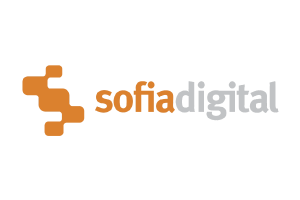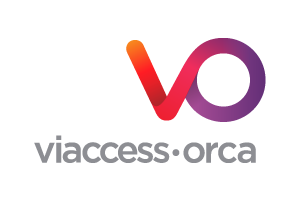
DVB Demos 2020
This FREE online event on Thursday 26 November provided an opportunity to learn about the benefits of DVB’s newest generation of internet-centric specifications directly from the companies that are implementing them.
The event consisted of a live stream featuring a series of short technology demonstrations, coupled with an opportunity to join each exhibitor later in their own private online meeting room.
Direct links
- ATEME – https://youtu.be/vpIut7CK0AI?t=197
- Broadpeak – https://youtu.be/vpIut7CK0AI?t=661
- Dolby – https://youtu.be/vpIut7CK0AI?t=1139
- ENENSYS Technologies – https://youtu.be/vpIut7CK0AI?t=1596
- Google – https://youtu.be/vpIut7CK0AI?t=2083
- Harmonic – https://youtu.be/vpIut7CK0AI?t=2509
- Kineton – https://youtu.be/vpIut7CK0AI?t=2844
- OnScreen Publishing – https://youtu.be/vpIut7CK0AI?t=3242
- OTT-Broadcast – https://youtu.be/vpIut7CK0AI?t=3630
- Sofia Digital – https://youtu.be/vpIut7CK0AI?t=4099
- TPV Technology – https://youtu.be/vpIut7CK0AI?t=4579
- Unified Streaming – https://youtu.be/vpIut7CK0AI?t=5001
- Verance – https://youtu.be/vpIut7CK0AI?t=5520
- Viaccess-Orca – https://youtu.be/vpIut7CK0AI?t=5904
- Wrap-up from Emily Dubs, DVB Head of Technology – https://youtu.be/vpIut7CK0AI?t=6461
The live stream was open to all on this page and on the DVB YouTube Channel. Registration was required only for the afternoon session.
Exhibitors
The Demos
You can find direct links to each exhibitor’s demo in the live stream in the sections below.
Click here to jump directly to the wrap-up presentation by Emily Dubs, DVB Head of Technology, who explained how DVB-I, DVB-TA, DVB-MABR and DVB-DASH fit together in a unified IP-centric media delivery ecosystem.

DVB-DASH enabling ATEME‘s TITAN encoding and packaging platform to deliver end-to-end services with a latency and quality aligned with broadcast.
Jump directly to the ATEME demo in the live stream
Headend
- HEVC encoding at various resolutions and bit rates
- CMAF packaging, including low-latency support and generation of a DVB-DASH service in addition to HLS
Delivery
- Low-latency push to the origin server (ATEME, Akamai)
- HTTP chunk transfer encoding
Player
- Support in a wide range of players (Akamai, Dash.js, Shaka player, GPAC, VO Player)
ATEME is a Member of the DVB Project.

DVB-MABR for a low-latency experience, bringing the scalability and reliability of broadcast to unmanaged networks through Broadpeak‘s nanoCDN solution.
Jump directly to the Broadpeak demo in the live stream
In this demo, the DVB-MABR multicast server is fed with a DVB-DASH low-latency stream. The content is transported over multicast to the DVB-MABR multicast gateways. The gateways serve the same DVB-DASH low-latency stream to the consumer devices. Playback can be done on any device or player that supports DASH with low latency.
The solution relies on the Broadpeak multicast transport protocol MSYNC. It is implemented in more than 100 different physical boxes and deployed in 15+ networks around the world. Transport using the FLUTE protocol is on the roadmap.
Broadpeak is proud to contribute to the DVB-MABR standardization effort as an early inventor of multicast ABR technology, sharing our unique experience from five years of development and serving several millions of end users every day.
Broadpeak is a Member of the DVB Project.

DVB-I fast-tracks the launch of enhanced audio and video services for immersive and personalized experiences.
Jump directly to the Dolby demo in the live stream
This demonstration will highlight:
- opportunities to use the DVB-I and DVB-DASH specifications to deliver enhanced-quality linear services with UHD video and full immersive audio, using Dolby AC-4 technology;
- opportunities for greater service personalization and wider accessibility, such as provision of Dialogue Enhancement to aid intelligibility for all.
The demonstration will include a linear UHD streaming service with AC-4 NGA audio that is discoverable via the DVB-I service list on a DVB-I connected TV. It will be developed in partnership with TV manufacturers and other members of the DVB community and can, for example, make use of the DVB-I reference application.
Dolby is a Member of the DVB Project.
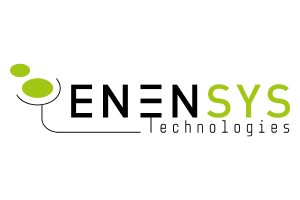
DVB-TA enabling accurate synchronization of targeted adverts with broadcast services thanks to our AdsReach solution; DVB-MABR compliant MediaCast controller and CubeAgent gateway for scalable low-latency streaming.
Jump directly to the ENENSYS demo in the live stream
Multicast
The ENENSYS Technologies live streaming solution enables the roll-out of scalable low-latency video services over IP networks, which integrate within a future-proof, open and flexible ecosystem thanks to DVB-MABR.
The demo will show the MediaCast broadband controller along with the CubeAgent multicast gateway, both DVB-MABR compliant. Along with the user interface for the controller, delivery on both tablets and connected TVs will be demonstrated, along with interoperability with third-party gateways.
Targeted Advertising
The AdsReach solution enables accurate synchronization of targeted advertising with broadcast services (banners and dynamic ad insertion). The demo will show how HbbTV and DVB-TA signalling can be added to existing headends, leveraging an HbbTV SDK running on commercial TV sets.
Various targeted content use cases will be shown, including the use of streamEvent reception on the TV set and live ad tracking.
Enensys Technologies is a Member of the DVB Project.

Support for DVB-based delivery comes to Android TV via the inclusion of the Common Broadcast Stack, demonstrating Google and Android TV’s commitment to broadcast TV.
Jump directly to the Google demo in the live stream
The Android TV Common Broadcast Stack is an optional component available as part of the Android TV offering. It supports all DVB protocol variants. The demo will show general Android capabilities and the capability of the Broadcast Stack with DVB-S and DVB-T on two different SoC devices.
The Broadcast Stack can be used for free in Android TV devices. It demonstrates Google and Android TV’s commitment to Broadcast TV.
Google is a Member of the DVB Project.
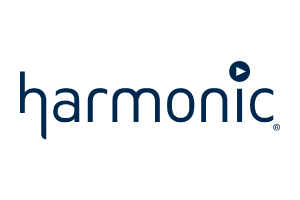
Targeted ad insertion and DVB-DASH in a full DVB-I environment, allowing Harmonic‘s VOS360 platform to deliver enhanced viewing experiences on every screen.
Jump directly to the Harmonic demo in the live stream
This demonstration will have two parts:
- End to end workflow for a Targeted Ad Insertion OTT solution running on a SaaS mode (VOS360 ), from the playout to the OTT client.
- A preview of Harmonic’s solution for Targeted Ad Insertion in a low-latency DVB-DASH workflow.
Harmonic is a Member of the DVB Project.

DVB-I as the perfect standard to lead the past and current generation of technology towards a new way of understanding and doing television.
Jump directly to the Kineton demo in the live stream
Kineton will showcase its demo built on a high-level technology stack; this new platform will enable all kinds of broadcasters to craft their own service lists with minimal effort, and to provide them to all compatible clients.
This platform will allow broadcaster to create, edit and validate service lists in the blink of an eye; it will perform all the necessary checks to ensure that the service lists created will be standards-compliant and free of imperfections.
Kineton is a Member of the DVB Project.
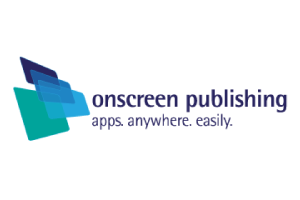
DVB-I enables a broadcast-like TV experience across a wide range of devices. OnScreen Publishing’s end-to end platform is ideal for evaluating, trialling and launching DVB-I.
Jump directly to the OnScreen Publishing demo in the live stream
This demonstration starts with OnScreen Publishing‘s DVB-I metadata manager and generator, which can deliver Service Registries, Service Lists and Content Guides.
It will also show the company’s DVB-I client apps in two families: the first built on HTML/JavaScript for HbbTV and Apple/Android tablets and mobiles, the second written in Swift with versions available for iPhone, iPad and Apple TV. These apps support a wide range of DVB-I features including service list discovery, service lists, instance selection, regionalisation, content guides and multi-language working.
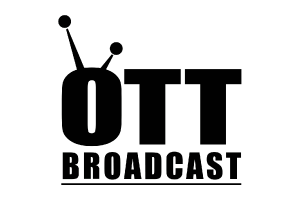
Several DVB standards are used in the OTT-B unified service infrastructure demonstrating native IP over satellite and terrestrial for robust low-latency streaming in-home to all screens.
Jump directly to the OTT-Broadcast demo in the live stream
OTT-Broadcast or OTT leveraged by Broadcast!
OTT-Broadcast (in short, OTT-B) is powered by a consortium of Broadcast and OTT technology companies, driven by an intellectual curiosity and interest in problem solving to offer versatile unified cost-effective broadcast solutions aligned with consumers’ media expectations.
In this session will you experience OTT-B in a “non-canned” live demo, enhancing the in-home consumer experience using multiple DVB standards in one unified OTT-B service infrastructure. The demo includes OTT-B service delivery using true native IP over satellite and terrestrial distribution technologies for robust low-latency streaming in-home to all screens.
This first generation of demos will demonstrate the versatility and vast opportunities leveraged by OTT-B, compared to any competing service delivery infrastructure. The next and soon to come demos will include both popular and personalized interactive OTT services along with a whole new generation of unified services, paving the road for both traditional and new stakeholders to monetize broadcast infrastructures in disruptive ways.
For the tech-savvy audience
The OTT-B demo demonstrates a unified OTT service infrastructure, enabling native IP over DVB-S2/-T2 utilising DVB-I/-GSE/-MABR and IETF QUIC standards for robust high quality low latency HLS streaming, in-home to all screens.
Using DVB-I as a master ingestion format, the channel metadata and feeds is adapted to OTT-B and distributed over existing infrastructure using cable (DOCSIS/GPON), satellite (Astra 19.2E) and terrestrial (ATSC3.0/DVB-T2).
The content distribution format is based on DVB-MABR but relies on low-latency HLS using HTTP/3, TLS1.3 and QUIC, combined with an updated ROUTE profile for transport over satellite and terrestrial using DVB-GSE and ATSC3.0 ALP respectively. Next revision will include DVB-GSE over DVB-T2.
The transceiver will demonstrate a low power smart in-home gateway, called “LEAF – SmartCast” (patent pending), that announces media services on the local network to be automatically discovered, bootstrapped and, in standard unicast, playback the media on any standard device like a tablet, smartphone, laptop, TV, set-top box or smart speaker using a lightweight client.
The backend infrastructure is implemented as part of the Copenhagen testbed of OTT-B, cf. DVB Scene Issue 55. OTT-B partners in the Copenhagen testbed are: Open Channel, mediathand, Protelevision, Aalborg University of Copenhagen, Strategy & Technology Ltd (S&T), DekTec Digital Video with valued support from France 24 (live feed signal) and SES (uplink teleport for Astra 19.2E).
For more information: ott-broadcast@mediathand.com
Jump directly to the Sofia Digital demo in the live stream
The DVB-I Reference Client is an open source project developed by Sofia Digital together with the DVB Project to demonstrate and validate different aspects the DVB-I service discovery and metadata specification while offering an example of how the client could look.
The client and its associated backend part brings together service list registries, service lists, services and service instances. It includes multi-language support, TV-Anytime schedule data and DRM examples.
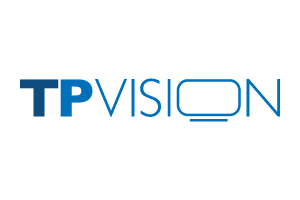
DVB-I offering a unified user experience, combining broadband and broadcast services on a DVB-I-native TV set.
Jump directly to the TPV Technology demo in the live stream
Building on the work done for the DVB-I demo on the DVB booth at IBC2019, this demo from TPV Technology will show native support for DVB-I service discovery and service playback integrated into prototype software running on a production 2020 Philips Android TV. It will include the full user journey starting from installation.
Features include:
- discovery of DVB-I service offerings from a local service list registry;
- installation of a DVB-I service list with support for region selection and service instance priorities;
- support for channel lists containing services delivered over both DVB-T/T2 and DVB-DASH (IP);
- integrated channel change between both terrestrial and DASH services.
TPV Technology is a Member of the DVB Project.
Jump directly to the Unified Streaming demo in the live stream
The problem is to generate live DVB-DASH streams for DVB-I in a cost-effective manner – streams should include ad insertion opportunities to enable targeted advertising. Encoders are expensive to run, so this demo from Unified Streaming will show how origin servers can be used to convert VOD to live.
It will also show setups with live ingest based on the DASH-IF Live Media Ingest protocol using the open source encoder FFmpeg. In this way, archives can be used more effectively in DVB-I and live streaming is usually more cost-effective in terms of CDN usage, etc.
Unified Streaming is a Member of the DVB Project.
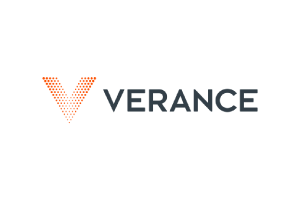
DVB-TA using watermarking to enable seamless advertisement replacement in HbbTV-enabled televisions that are connected to set-top boxes that lack targeted advertising capabilities.
Jump directly to the Verance demo in the live stream
DVB and HbbTV are working to specify methods for use of watermarking to signal and insert targeted advertising. Watermarks can pass seamlessly through all distribution paths (including those that require transcoding), enabling targeted advertising to be delivered to households with HbbTV-enabled televisions, even if they receive broadcast content from a set-top box without targeted advertising capabilities.
Verance will demonstrate how the audio and video watermark technologies (specified by ATSC and adopted by HbbTV and DVB) work together to signal targeted advertising insertion opportunities and adapt the presentation of targeted ads in response to actions on the set-top box in order to achieve a seamless user experience. Watermarking provides frame-accurate synchronization with 100% match rate to replace targeted ads, even in trick play situations (channel change, pause, fast forward, rewind, etc.).
Verance is a Member of the DVB Project.
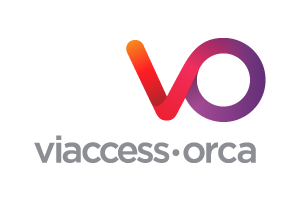
DVB-TA as the basis for a full end-to-end solution, from ad inventory manager to hybrid frame-accurate ad replacement on a DVB stream.
Jump directly to the Viaccess-Orca demo in the live stream
Viaccess-Orca will demonstrate a full end-to-end DVB-TA solution from ad inventory manager to a hybrid frame-accurate ad replacement on a DVB stream. Moreover, Viaccess-Orca and its partners will present DVB-I uses cases, including DVB-DASH, DVB-MABR, and DVB TA demonstrations using Viaccess-Orca’s TA solution and Secure Player advanced features. The solution offers cross-platform, unified service management supporting all devices and services, including linear, catch-up, NPVR, and on-demand video.
- Presentation of Viaccess-Orca E2E platform and solution to manage and prepare Targeted Advert Insertion in a DVB-I environment.
- Demonstration of DVB-DASH Low Latency rendering with ATEME
- Demonstration of a DVB-MABR use case with Broadpeak
- Demonstration of targeted ad insertion, linear or non-linear mode, on DVB-DASH in a full DVB-I environment with Harmonic
Viaccess-Orca is a Member of the DVB Project.
